Easy Vitello Tonnato Recipe – Cold Veal With Tuna Sauce (VIDEO)
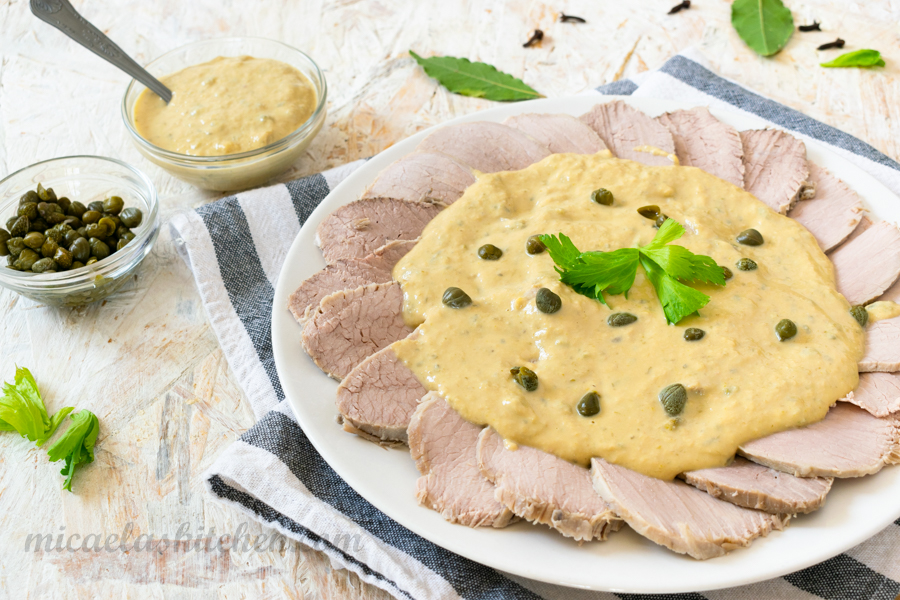
Craving an authentic Italian delicacy? Learn how to make Vitello tonnato, a mouthwatering cold veal dish with a creamy tuna sauce.
What Is Vitello Tonnato
Vitello Tonnato (veal with a tuna sauce), also known as vitel tonnè, is an authentically Italian dish despite its name. Originating in Piedmont (Italy) in the 18th century, vitello tonnato has firmly taken root as a treasured element of Italy’s culinary traditions.
Veal with tuna sauce has long been a staple dish served at classic Italian restaurants for celebratory lunches marking anniversaries, baptisms, confirmations, and other such occasions. Even today, it remains a commonly served and beloved meat-based entree despite its somewhat retro appearance.
The dish is prepared using a cut of lean and tender veal topside or girello, topped with a delicious tuna sauce. The veal is very thinly sliced and arranged together in a large serving dish, then covered with the sauce. Its simplicity and familiar flavor profile have ensured Vitello Tonnato’s ongoing popularity as a standard option for Italian appetizers or second courses.
Vitello Tonnato Ingredients
For the Meat:
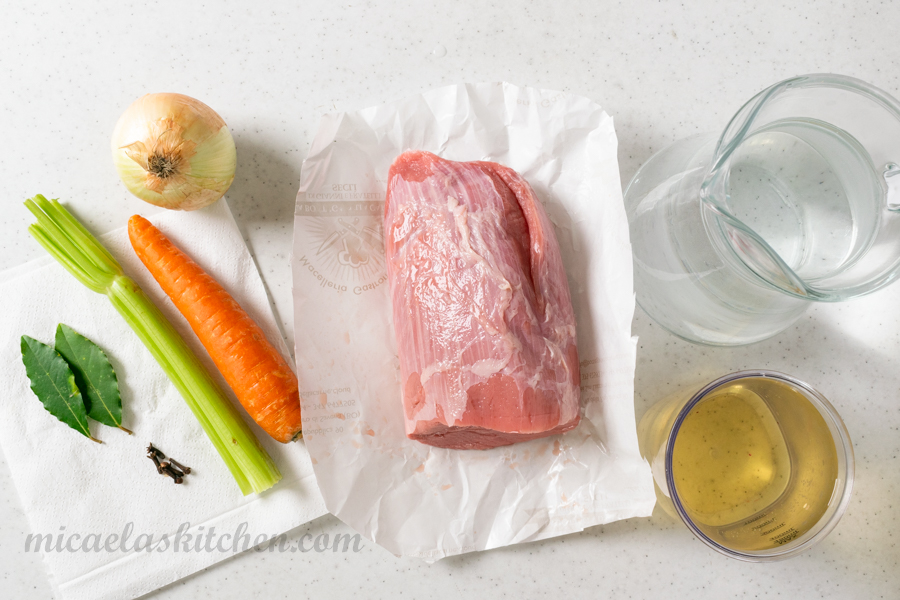
- 1 celery stick, washed
- 1 carrot, washed
- 1 yellow onion
- 1 kg veal round (2 pounds)
- 2 bay leaves
- 5 cloves
- 750 ml dry white wine (about 3 cups)
- 1.5 l water (about 6 cups)
- Salt
For the Sauce:
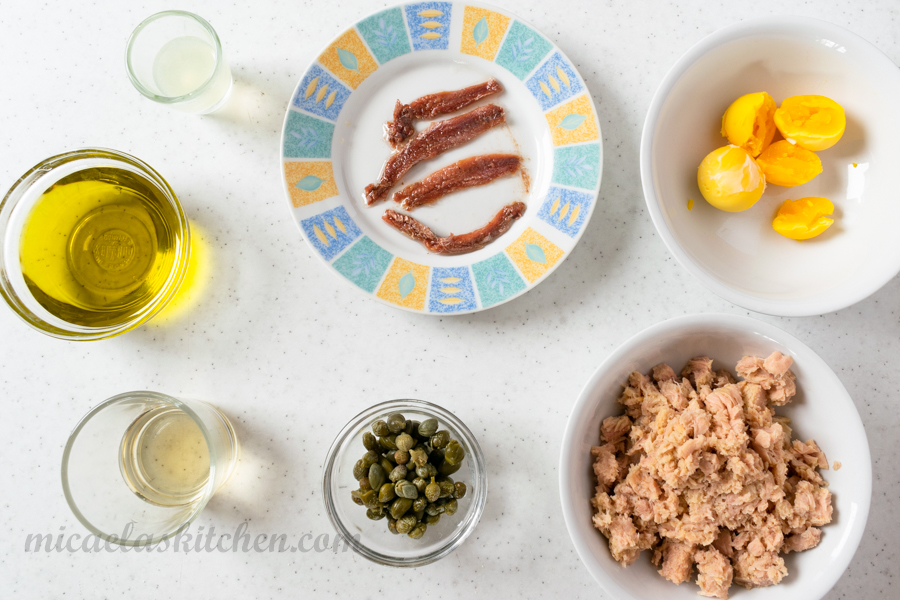
- 250 g tuna, drained (8 oz)
- 3 hard-boiled yolks
- 25 g capers (1 oz)
- 4 anchovy fillets, desalted
- 10 ml lemon juice (about 1 tablespoon)
- 15 ml white wine vinegar (1 tablespoon)
- 50 ml extra virgin olive oil (about 3 tablespoons)
Vitello Tonnato Video Tutorial
Vitello Tonnato Recipe
The recipe is simple. It’s all about paying a little extra care to cooking the meat so it comes out perfectly tender. And don’t sweat the plating too much – we all know the taste is what really matters, right? But I promise that with this recipe, even the presentation will look great. Just follow the steps and you will have a satisfying meal that lives up to expectations!
The Meat
For the best results, wrap the netting securely around the roast before cooking to maintain its shape and prevent sagging during the cooking process. To save time and ensure excellent outcomes, consider having your trusted butcher prepare the roast.
Start by marinating the meat in the refrigerator for 12 hours with wine, herbs, and chopped vegetables. Transfer the entire marinade directly to the saucepan you will use for cooking (1). Add water to cover the ingredients and season with salt (2). Simmer over low heat for about 60 minutes with the pot covered.
TIP 1 – When searing the roast, be careful not to let a crust form on the meat’s surface. As soon as one side turns white, flip the roast to prevent overcooking and facilitate slicing later on.
TIP 2 – If you didn’t have a chance to marinade the meat, you can add salt while stirring the roast in the pan as it cooks.
After an hour, check for doneness. Gently poke the roast with a fork. If you notice a small amount of lightly reddish liquid coming out, additional cooking time may be necessary to ensure the roast reaches the correct internal temperature evenly.
Then, set aside two ladles of the cooking liquid. Let the meat cool at room temperature initially, then refrigerate for at least 2 hours to firm up completely.
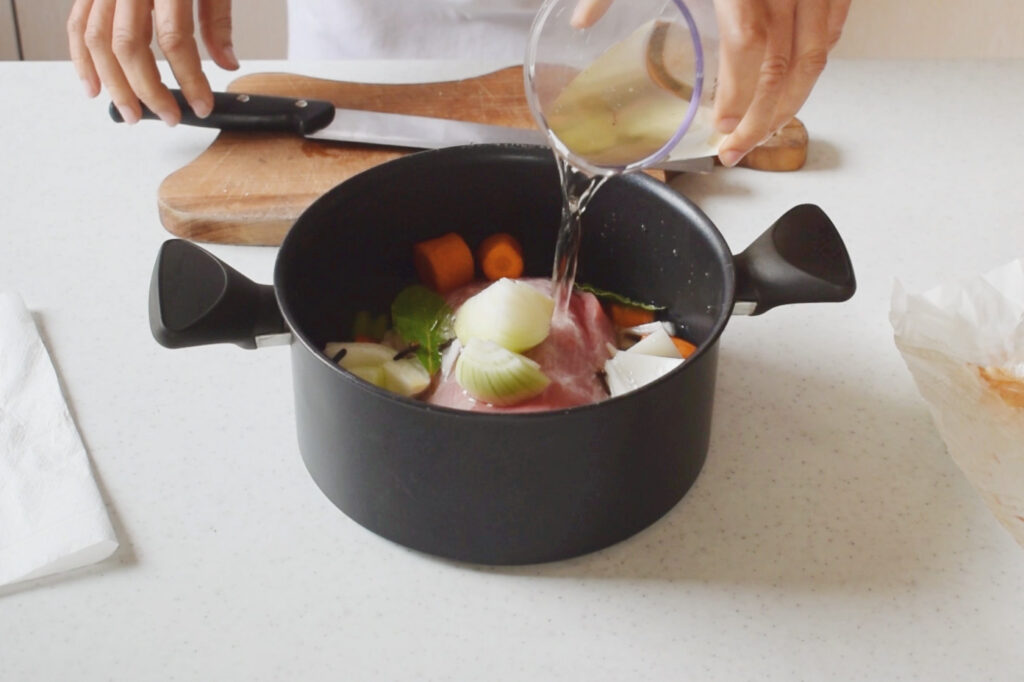
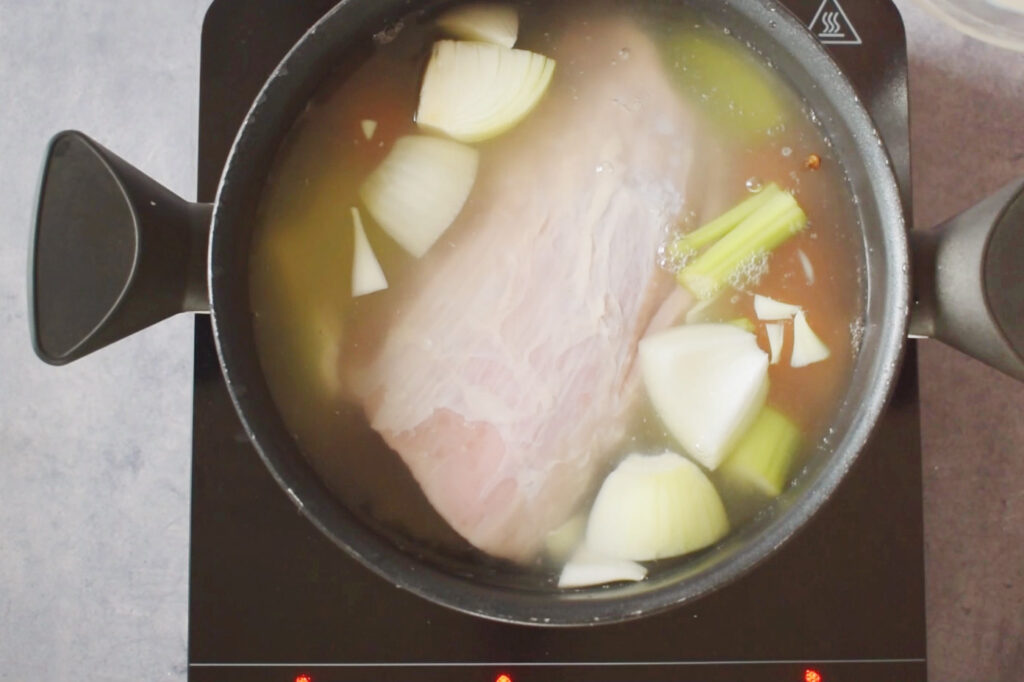
The Tuna Sauce
To prepare the tuna sauce, mix canned tuna, hard-boiled eggs, capers, anchovies, lemon juice, white wine vinegar, and olive oil in a food processor or with an immersion blender in a glass (3). Blend all the ingredients together until smooth. Slowly add the reserved cooking liquid while blending until you reach the desired consistency (4).
TIP 3 – If you don’t like capers, you can substitute pickled onions.
TIP 4 – If the sauce is too thick, you can add about two tablespoons of additional meat cooking liquid to reach your desired thickness.
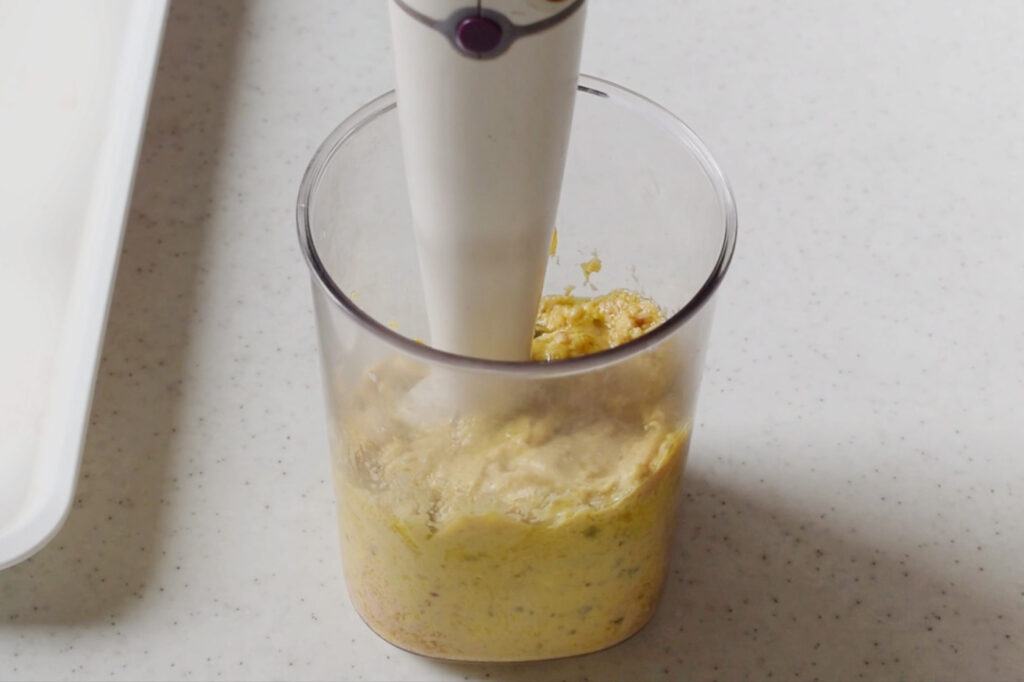

Assemble Vitello Tonnato
When presenting veal with tuna sauce, allow for creative plating arrangements. Thinly sliced the chilled veal and arrange onto serving plate of your choice, then generously top with the prepared sauce.
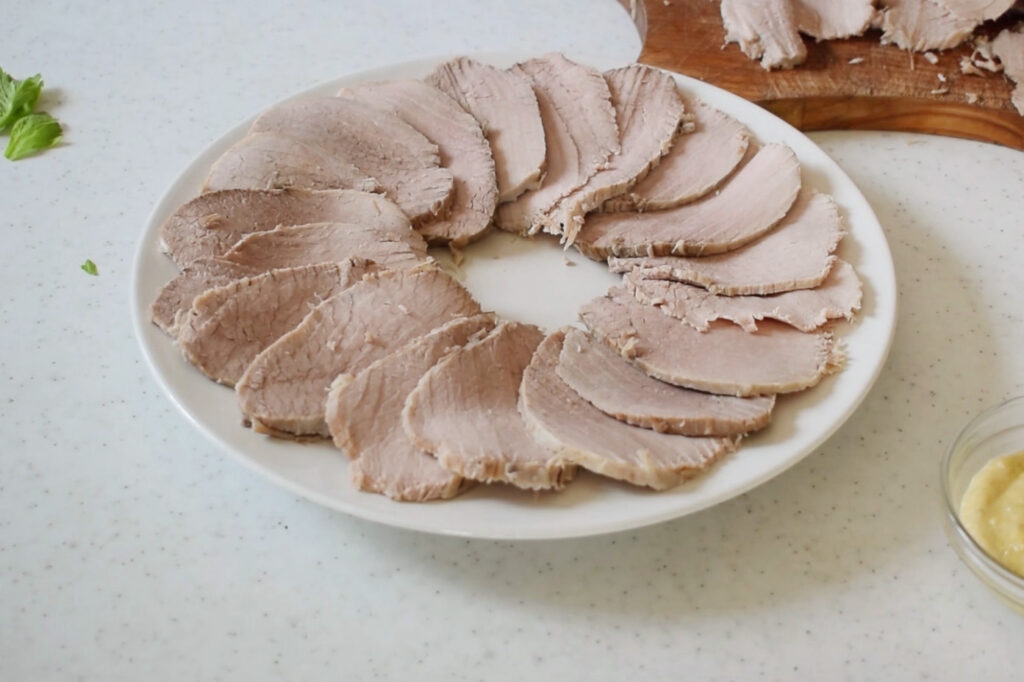
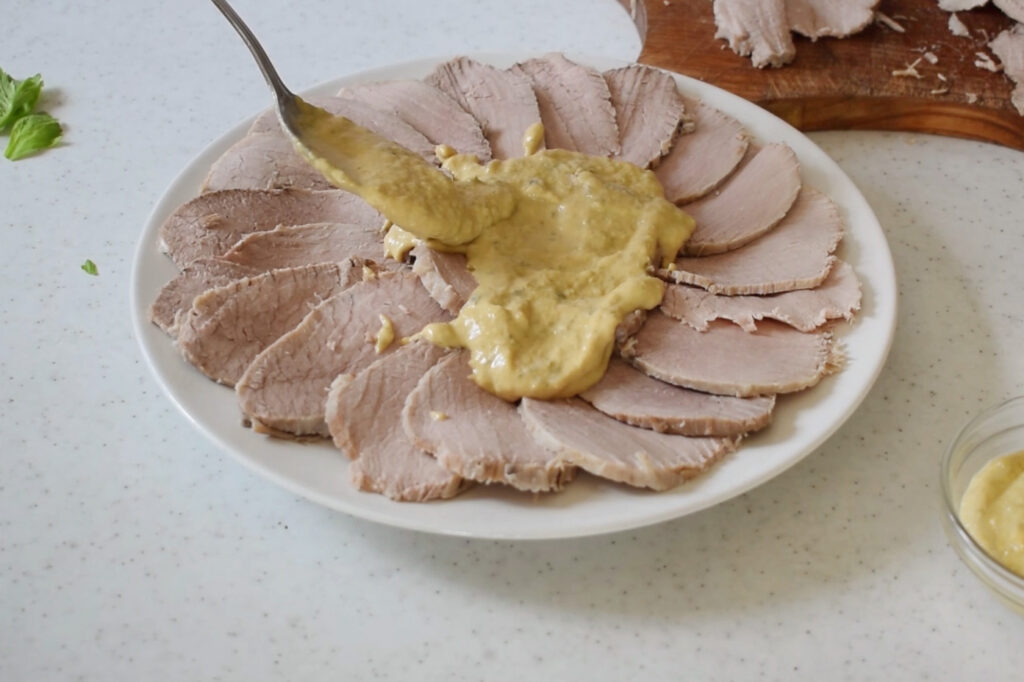
5 Mistakes to Avoid When Preparing Vitello Tonnato
This classic Italian dish of veal coated in a tuna-based sauce is best when prepared with care. Here are some key areas to focus on for ideal results.
- Choosing the wrong cut of meat – When making vitello tonnato, make sure to choose the right cut of meat. The recommended part of the animal to use is the magatello or the veal round, which is a top-quality veal cut from the leg. This section is prized for its lean and tender qualities.
- Do not marinate the meat – According to the original recipe for veal tonnato, the meat should be marinated for hours in white wine, vegetables (onion, carrot, celery) and spices (such as bay leaves and cloves), stirring it occasionally, so that it absorbs the flavors and remains more flavorful.
- Cook the veal only with water – When preparing veal for vitello tonnato, cook the meat with the full vegetable marinade and water. It should not be cooked with simply water alone.
- Overcook the meat – The meat should remain tender and not be dried out. Remove it from the heat while still slightly rosy inside.
- Use mayonnaise and eggs – Even if the original recipe doesn’t include it, some people prefer to add mayonnaise to the sauce. Using mayonnaise can make the preparation of veal tuna sauce easier, but if using mayonnaise, don’t add eggs.
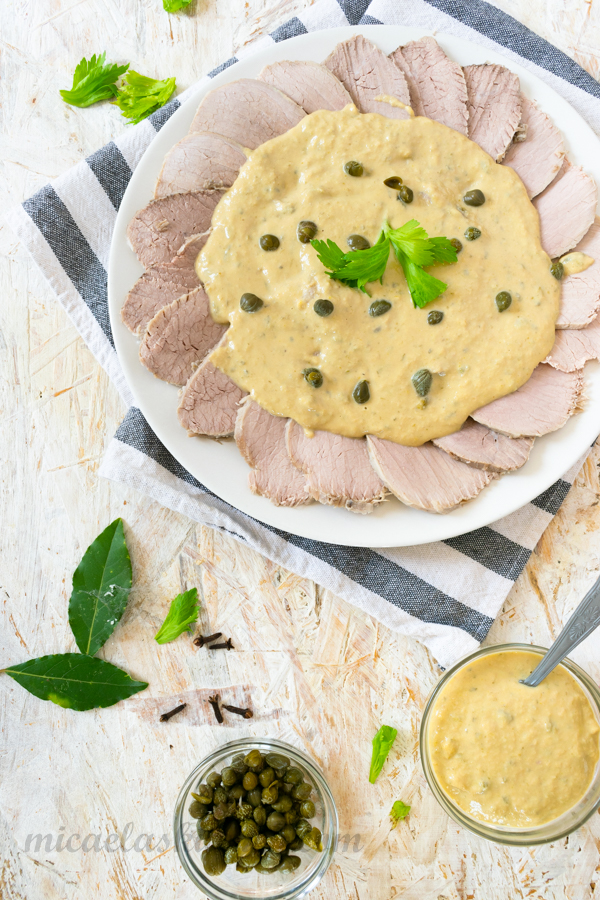
Vitello Tonnato Wine Pairing
This dish has two main characteristics to consider when selecting a pairing wine. The sauce that accompanies the meat has a distinct richness. Additionally, the meat itself has a natural sweetness tendency. Capers are also included, adding their distinct flavor profile. When combined, the elements of this preparation provide rather full-bodied flavors that persist on the palate. As a result, delicate white wines with a lighter body risk being overwhelmed.
A wine with greater structure but balanced acidity is preferable. For a white wine pairing, an Arneis falls into the classic regional combination that maintains its appeal. Another full-bodied white like Vermentino or Chardonnay also pair well.
For sparkling wines, an Oltrepò Pavese is a sound choice. This underrated sparkling wine from Italy’s Lombardy region is often overshadowed unfairly by Franciacorta but shines in top vintages.
White and sparkling wines are generally the best matches. However, if you prefer a light-bodied red wine, Pinot Noir responds positively without compromising the delicacy of the veal.
How To Store Vitello Tonnato
To store Vitello Tonnato properly, place any leftover slices of meat in an airtight container and refrigerate them promptly. It’s best to consume the dish within 2-3 days to maintain its quality and freshness.
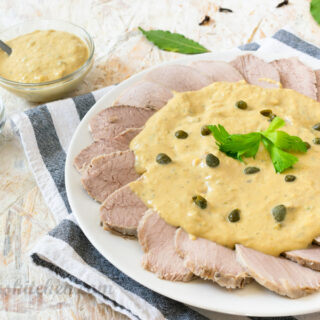
Easy Vitello Tonnato Recipe – Veal With Tuna Sauce (VIDEO)
Ingredients
For the Meat:
- 1 celery stick washed
- 1 carrot washed
- 1 yellow onion
- 1 kg veal round (2 pounds)
- 2 bay leaves
- 5 cloves
- 750 ml dry white wine (about 3 cups)
- 1.5 l water (about 6 cups)
- Salt
For the Sauce:
- 250 g tuna drained – (8 oz)
- 3 hard-boiled yolks
- 25 g capers (1 oz)
- 4 anchovy fillets desalted
- 10 ml lemon juice (about 1 tablespoon)
- 15 ml white wine vinegar (1 tablespoon)
- 50 ml extra virgin olive oil (about 3 tablespoons)
Instructions
The Meat
- For the best results, wrap the netting securely around the roast before cooking to maintain its shape and prevent sagging during the cooking process. To save time and ensure excellent outcomes, consider having your trusted butcher prepare the roast.
- Start by marinating the meat in the refrigerator for 12 hours with wine, herbs, and chopped vegetables.
- Transfer the entire marinade directly to the saucepan you will use for cooking. Add water to cover the ingredients and season with salt. Simmer over low heat for about 60 minutes with the pot covered.
- When searing the roast, be careful not to let a crust form on the meat’s surface. As soon as one side turns white, flip the roast to prevent overcooking and facilitate slicing later on.
- After an hour, check for doneness. Gently poke the roast with a fork. If you notice a small amount of lightly reddish liquid coming out, additional cooking time may be necessary to ensure the roast reaches the correct internal temperature evenly.
- Then, set aside two ladles of the cooking liquid.
- Let the meat cool at room temperature initially, then refrigerate for at least 2 hours to firm up completely.
The Tuna Sauce
- To prepare the tuna sauce, mix canned tuna, hard-boiled eggs, capers, anchovies, lemon juice, white wine vinegar, and olive oil in a food processor or with an immersion blender in a glass. Blend all the ingredients together until smooth. Slowly add the reserved cooking liquid while blending until you reach the desired consistency.
- If the sauce is too thick, you can add about two tablespoons of additional meat cooking liquid to reach your desired thickness.
Assemble Vitello Tonnato
- When presenting veal with tuna sauce, allow for creative plating arrangements. Thinly sliced the chilled veal and arrange onto serving plate of your choice, then generously top with the prepared sauce.






